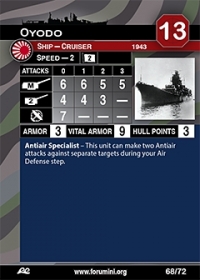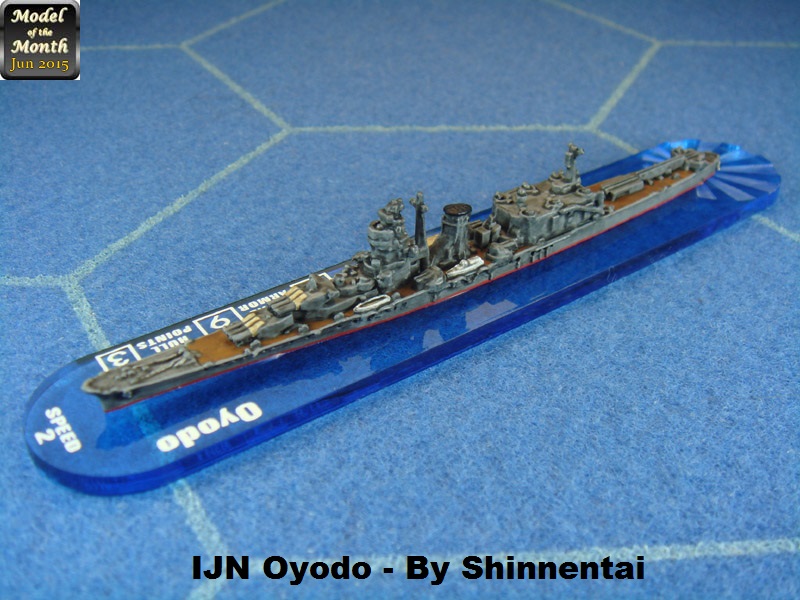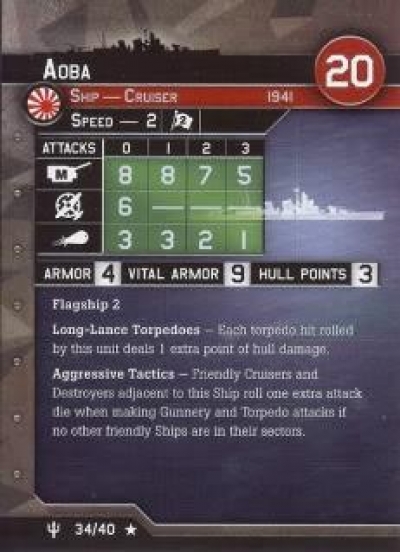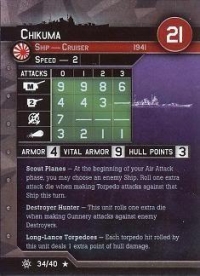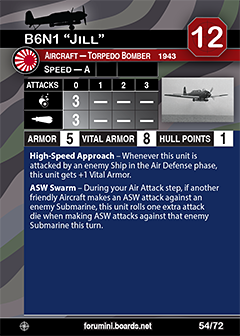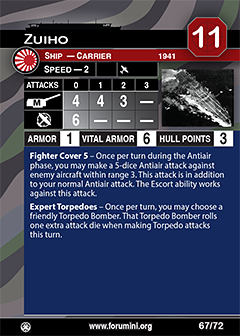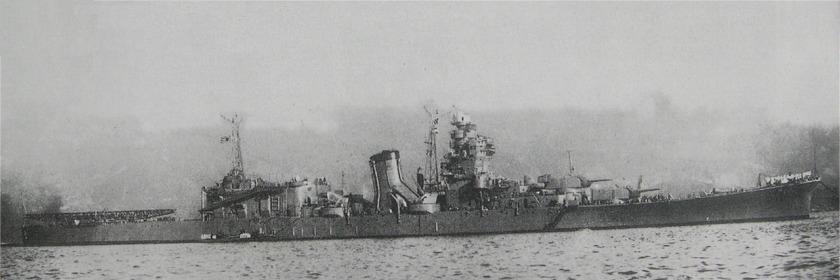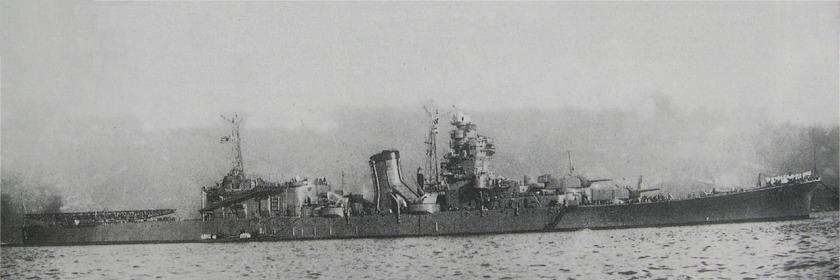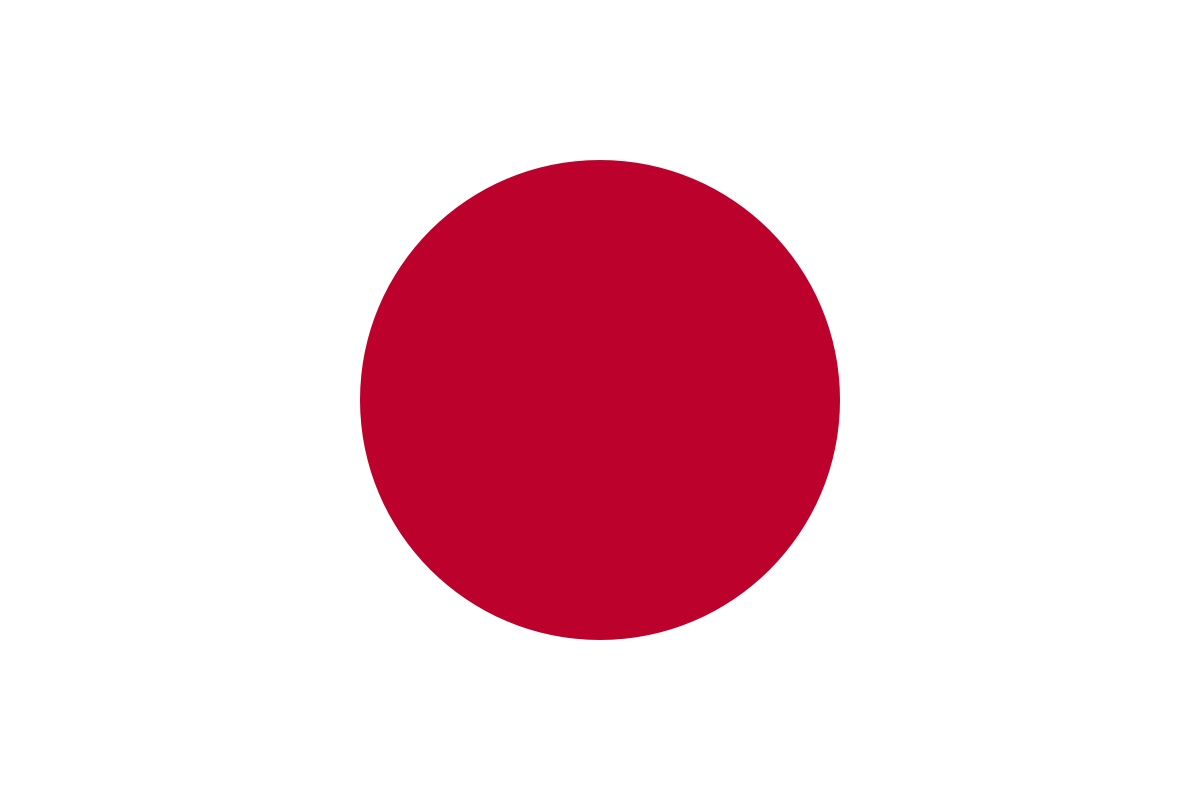Oyodo
| General Type | Ship |
| Unit Type | Cruiser |
| Cost | 13 |
| Set | Battle Line |
| Manufacturer | Forumini |
| Available | 1943 |
| Set ID | 68 |
| Game Class Limits | Oyodo |
| Country | Japan (Details) |
| Prototype | Oyodo (Details) |
| Class | Oyodo (Details) |
| Armor | 4 |
| Vital | 9 |
| Hull Points | 3 |
| Speed | 139 |
| Primary | 10/10/9/7 |
| Secondary | 4/4/3/0 |
| Torpedoes | 3/3/2/1 |
| AA | 7/0/-/- |
| Special Ability | Long-Lance Torpedoes |
| Special Ability | Determination |
| Game Rarity | X |
Click to see the details
market
Prototype:
Oyodo, was a light cruiser of the Imperial Japanese Navy, completed during World War II, and was the only ship of her class completed before the end of the war. As was the practice with IJN light cruisers, she was named after a river, in this case the Oyodo River in Kyushu, Japan. Intended as a command vessel for submarine operations, she was used for a variety of missions, and became the flagship of the Combined Fleet before being sunk by American aircraft at Kure, Hiroshima in July 1945.
The Imperial Japanese Navy concept of submarine warfare was to use long-range submarines in squadrons (sentai) to attack enemy units at extended ranges. These submarines would be coordinated by a cruiser, which would use reconnaissance aircraft to provide targeting information. Originally, it was intended that the Agano-class cruisers would be able to serve in this role, but proved unsatisfactory. By the late 1930s, the Japanese Navy had defined the need for seven cruisers to support its seven submarine squadrons. After several design iterations, funding for the first two vessels was approved under the 1939 4th Replenishment Program, of which only one, Oyodo, was laid down; the second ship was to be named Niyodo. Immediately after Oyodo was completed, all available shipbuilding resources at the Kure Naval Arsenal were diverted to build more aircraft carriers.
The Imperial Japanese Navy concept of submarine warfare was to use long-range submarines in squadrons (sentai) to attack enemy units at extended ranges. These submarines would be coordinated by a cruiser, which would use reconnaissance aircraft to provide targeting information. Originally, it was intended that the Agano-class cruisers would be able to serve in this role, but proved unsatisfactory. By the late 1930s, the Japanese Navy had defined the need for seven cruisers to support its seven submarine squadrons. After several design iterations, funding for the first two vessels was approved under the 1939 4th Replenishment Program, of which only one, Oyodo, was laid down; the second ship was to be named Niyodo. Immediately after Oyodo was completed, all available shipbuilding resources at the Kure Naval Arsenal were diverted to build more aircraft carriers.
Country:
Japan is an island nation in the Pacific Ocean with dense cities, imperial palaces, mountainous national parks and thousands of shrines and temples. Shinkansen bullet trains connect the main islands of Kyushu (with Okinawa's subtropical beaches), Honshu (home to Tokyo and Hiroshima’s atomic-bomb memorial) and Hokkaido (famous for skiing). Tokyo, the capital, is known for skyscrapers, shopping and pop culture.
Although legend has it that Japan was founded in 660BC, archaeologists agree that settlement in the Japanese archpelago dates back as far as 100,000 years. The Jomon Period (8000-c.300BC) is the earliest that has been studied. It is named after the 'jomon' or cord-marked pattern style of pottery of the period.
Although legend has it that Japan was founded in 660BC, archaeologists agree that settlement in the Japanese archpelago dates back as far as 100,000 years. The Jomon Period (8000-c.300BC) is the earliest that has been studied. It is named after the 'jomon' or cord-marked pattern style of pottery of the period.
Item created by: Lethe
on 2015-05-31 17:46:30
Last edited by: gdm on 2019-08-13 07:12:50
If you see errors or missing data in this entry, please feel free to log in and edit it. Anyone with a Gmail account can log in instantly.
Last edited by: gdm on 2019-08-13 07:12:50
If you see errors or missing data in this entry, please feel free to log in and edit it. Anyone with a Gmail account can log in instantly.


